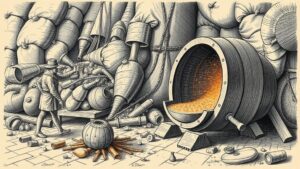Using Lightweight Gear for Quick Prospecting in Remote Areas
Using Lightweight Gear for Quick Prospecting in Remote Areas
Prospecting in remote areas offers the thrill of discovery, but it also presents unique challenges, particularly concerning the gear used. Traditional prospecting equipment can be cumbersome, making mobility difficult. The use of lightweight gear can significantly enhance efficiency and effectiveness when scouting remote locations. This article explores the rationale behind using lightweight gear, various types of equipment, specific benefits, and real-world applications.
The Importance of Lightweight Gear
In the world of prospecting, especially in remote areas, the ability to move quickly and efficiently can be the difference between success and failure. Lightweight gear minimizes fatigue and allows prospectors to cover larger areas in less time. Studies indicate that carrying approximately 20% of one’s body weight is optimal for maintaining stamina and efficiency during long hikes.
Types of Lightweight Gear
- Portable Metal Detectors: Modern metal detectors such as the Minelab Equinox 800 weigh around four pounds, making them easy to handle over extended periods. r multi-frequency capabilities allow users to adapt to diverse soil conditions.
- Ultralight Backpacking Equipment: Gear like the REI Flash Pack weighs under two pounds and has ample capacity for essential tools, snacks, and water. This type of equipment is designed for quick access to tools while on the move.
- Compact Shovels and Tools: Tools like the Gerber Folding Shovel are lightweight and durable, making them ideal for excavation tasks without adding significant weight to a prospecting kit.
- Lightweight Clothing and Footwear: Moisture-wicking shirts and trail shoes equipped with good traction can prevent exhaustion, allowing prospectors to focus on their assessment tasks rather than discomfort.
Benefits of Using Lightweight Gear
The adoption of lightweight gear comes with several advantages, particularly in remote prospecting situations. These include:
- Enhanced Mobility: Lightweight gear allows prospectors to traverse difficult terrain, increasing their ability to access hard-to-reach locations. For example, professionals in Alaska often use lightweight tools to navigate through wilderness areas that would otherwise be impassable.
- Increased Endurance: The reduction in weight can lead to lower fatigue rates. A study published in the Journal of Wilderness Medicine found that hikers carrying fewer than 30 pounds could sustain a faster pace over longer distances than those with heavier loads.
- Improved Focus on Prospecting: With lesser distractions from heavy equipment, prospectors can concentrate on their analysis of soil and mineral presence, leading to better decision-making and potential discoveries.
Real-World Applications
Many prospectors have adopted lightweight gear. For example, the story of Mark, a gold prospector from Nevada, illustrates the positive impact of lightweight tools. By choosing compact and effective gear, Mark increased his yield by 30% within the first month of switching to ultralight metal detectors and shovels, allowing him greater area coverage and better detection capabilities.
Addressing Potential Concerns
One significant concern for prospectors considering the switch to lightweight gear is durability. Some lightweight options may not withstand rigorous conditions. But, reputable brands often utilize advanced materials that combine both lightweight properties and durability. For example, titanium tools can be surprisingly sturdy yet significantly lighter than their steel counterparts.
Actionable Takeaways
For those looking to enhance their prospecting efficiency in remote locations, the following steps can help:
- Evaluate your current equipment and identify areas where you can reduce weight without sacrificing quality.
- Test different types of lightweight gear to find what best suits your prospecting style and the environments you will encounter.
- Stay informed about advancements in lightweight prospecting technology, as new tools are continuously being developed.
By implementing lightweight gear strategically, prospectors can maximize their potential for discovery while minimizing physical strain, thereby making the experience far more enjoyable and productive.


